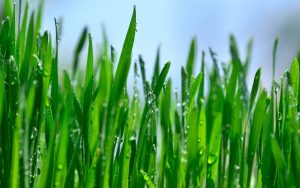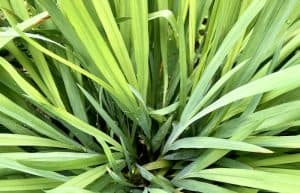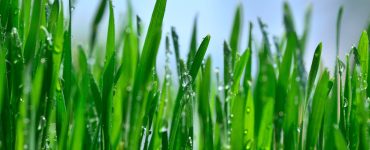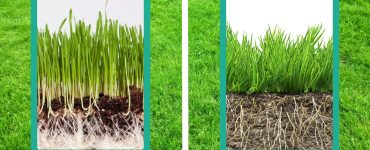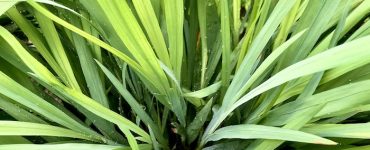In our quest for lush and vibrant lawns, we often find ourselves battling against a formidable foe: water consumption. As water scarcity becomes an increasingly critical global concern, it is vital that we rethink our approach to lawn care and explore more sustainable alternatives.
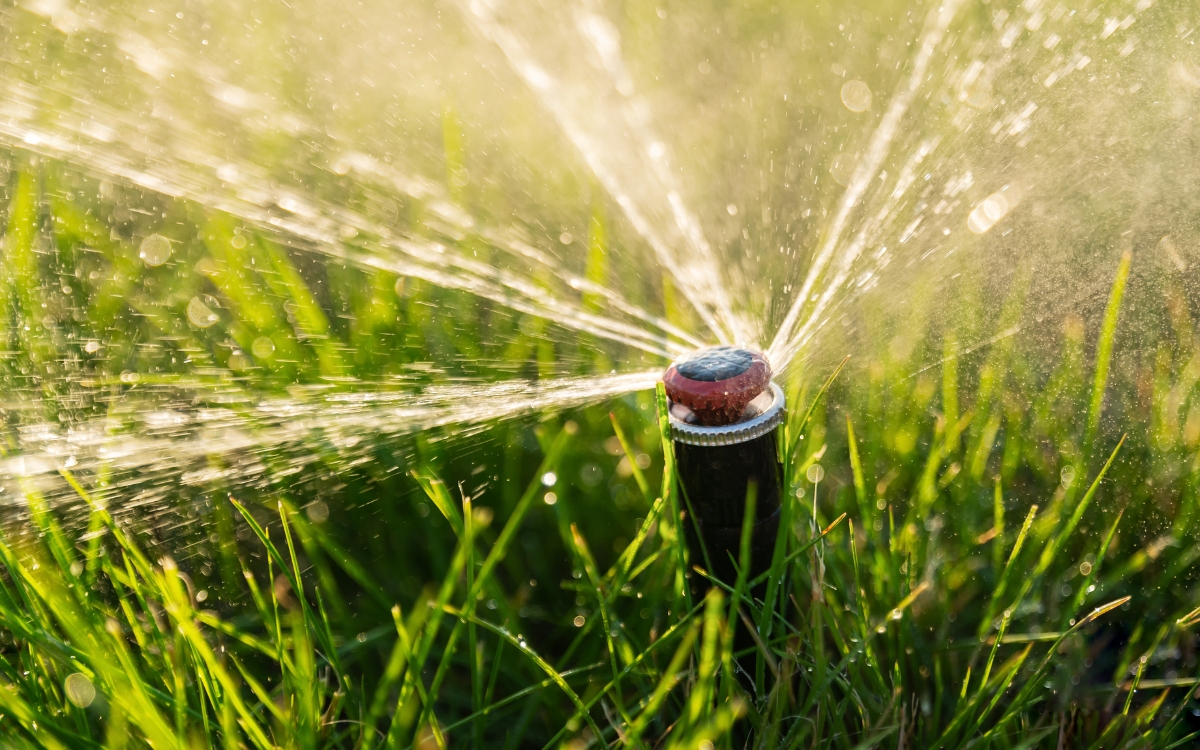
One such solution gaining attention is wheatgrass, a hardy and eco-friendly grass variety that shows promising potential in reducing water usage for lawns. In this blog post, we will delve into the benefits of wheatgrass for lawns and explore the science behind its water efficiency. Furthermore, we’ll examine the economic and environmental advantages of embracing wheatgrass in your lawn.
Why Wheatgrass Contributes to Water Conservation?
Exploring the Unique Properties of Wheatgrass
Wheatgrass (Triticum aestivum) is a type of grass that offers a range of distinctive properties, making it an attractive option for eco-conscious lawn enthusiasts. Unlike conventional grass species, wheatgrass possesses a deep root system, enabling it to access water from lower soil levels. This root structure not only contributes to its exceptional water retention capabilities but also makes it more resilient during periods of drought and heat stress.
Additionally, wheatgrass exhibits a vigorous growth pattern, rapidly establishing itself in lawns and outcompeting weeds. Its quick establishment means that homeowners and landscapers spend less time and resources dealing with weed control, reducing the need for chemical herbicides. Moreover, its dense growth habit provides natural weed suppression, further enhancing its appeal as an eco-friendly lawn alternative.
Enhanced Water Retention Capabilities
One of the most significant benefits of using wheatgrass in lawns is its superior water retention capabilities. Traditional lawns, especially those composed of common grass types like Kentucky bluegrass or fescue, often require frequent watering to maintain their appearance. However, wheatgrass has the unique ability to hold and store water more efficiently, reducing the need for frequent irrigation.

The deep root system of wheatgrass allows it to draw water from deeper soil layers, where it can remain accessible even during dry spells. This feature not only reduces water consumption but also enhances the lawn’s ability to withstand drought conditions. Homeowners and landscape managers will appreciate the reduced need for constant watering and the financial savings that come with lower water bills.
Drought Tolerance and Resilience
In regions prone to drought or where water resources are limited, wheatgrass shines as a resilient lawn option. When faced with water scarcity or high temperatures, many conventional lawns with shallow root systems may wither and become brown. In contrast, wheatgrass demonstrates impressive drought tolerance, maintaining its green color and overall health for longer periods.
This drought-resistant nature not only minimizes the need for irrigation but also reduces the stress on local water supplies during dry seasons. Additionally, as other grass types struggle to survive during prolonged droughts, wheatgrass continues to thrive, providing homeowners with a consistently green and visually appealing lawn throughout the year.
The Science Behind Wheatgrass and Water Efficiency
Investigating Wheatgrass’s Root Structure
Wheatgrass’s remarkable water efficiency can be attributed to its unique root structure. Unlike many conventional grass types that have shallow root systems, wheatgrass develops deep and extensive roots. These long roots enable the plant to reach deeper into the soil profile, tapping into water sources that are beyond the reach of other grasses.
The deep root system of wheatgrass allows it to access moisture stored in the subsoil, which is particularly advantageous during dry periods. While conventional lawns may struggle to find enough water near the surface and require frequent irrigation, wheatgrass can draw upon its reserves from lower soil levels, reducing its dependency on regular watering.
Transpiration Rates: How Wheatgrass Differs from Traditional Lawns
Transpiration is the process through which plants lose water vapor from their leaves into the atmosphere. This natural phenomenon is crucial for plant growth and nutrient uptake, but it also leads to water loss from the plant. In comparison to some traditional lawn grasses, wheatgrass exhibits lower transpiration rates, meaning it releases less water vapor.
The reduced transpiration rates of wheatgrass contribute to its water-saving capabilities. By losing less water to the atmosphere, the plant retains more moisture within its tissues and the soil around its roots. This feature not only conserves water but also enhances the overall health and resilience of the wheatgrass during periods of limited water availability.
Studies and Research Supporting Wheatgrass’s Water-Saving Claims
The water-saving potential of wheatgrass has caught the attention of researchers and environmentalists alike. Numerous studies have been conducted to evaluate its water efficiency and validate its reputation as an eco-friendly lawn option. These research efforts have consistently demonstrated that wheatgrass requires less water for sustenance compared to many traditional lawn grasses.
Scientists have measured the water use of wheatgrass under various conditions, including different watering frequencies and soil types. Across multiple experiments, wheatgrass has consistently proven its ability to thrive with less water, making it a viable choice for areas facing water scarcity or drought challenges.
Furthermore, these studies have shown that even during periods of limited irrigation or water restrictions, wheatgrass maintains its green color and vitality. This resilience contributes to its appeal as a sustainable lawn choice that can withstand environmental stresses while conserving precious water resources.
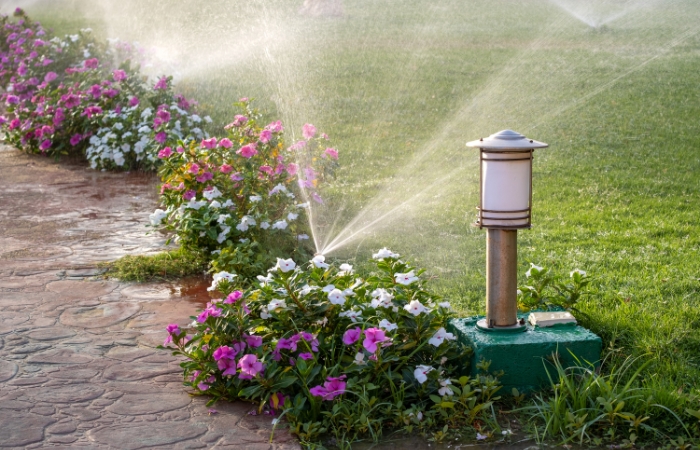
The Role of Wheatgrass in Soil Moisture Retention
Another factor contributing to wheatgrass’s water efficiency is its capacity to retain soil moisture. As the deep roots of wheatgrass reach into lower soil layers, they create channels that facilitate water movement and storage. This enhances the overall water-holding capacity of the soil, allowing it to act as a reservoir during dry spells.
By promoting soil moisture retention, wheatgrass reduces the need for frequent irrigation. The grass can draw upon the stored water when surface moisture becomes depleted, ensuring its survival and maintaining its aesthetic appeal even in adverse weather conditions.
Comparing Wheatgrass with Conventional Lawns
Watering Requirements: Wheatgrass vs. Traditional Grass Types
One of the most significant differences between wheatgrass and conventional lawns lies in their watering requirements. Conventional grass types, such as Kentucky bluegrass, fescue, and Bermuda grass, typically demand frequent and consistent watering to maintain their lush appearance. In contrast, wheatgrass’s deep root system allows it to access moisture from deeper soil layers, reducing its dependency on frequent irrigation.
While traditional lawns may suffer and turn brown during dry spells or water restrictions, wheatgrass exhibits greater drought tolerance and resilience. Its ability to thrive with less water makes it an appealing choice for homeowners and landscapers seeking to reduce water consumption without compromising the visual appeal of their lawns.
Nutritional Differences and Maintenance Needs
Wheatgrass and conventional grasses also differ in their nutritional requirements and maintenance needs. Traditional lawns often demand regular applications of fertilizers to sustain their growth and vibrant color. In contrast, wheatgrass is less reliant on chemical inputs due to its hardy nature and ability to draw nutrients from the soil through its deep root system.
Moreover, the rapid growth rate of wheatgrass contributes to its low maintenance nature. As it outcompetes weeds naturally and forms a dense turf, the need for frequent mowing and herbicide application diminishes. This can save both time and money for homeowners and reduce the environmental impact of lawn maintenance practices.
Aesthetics and Visual Appeal
While conventional lawns have long been associated with the classic manicured look, wheatgrass offers a distinctive appearance that appeals to those seeking a more natural and eco-friendly landscape. With its vibrant green color and lush texture, wheatgrass creates a picturesque setting that adds a touch of wild beauty to any lawn.
Some homeowners may appreciate the more structured and uniform appearance of traditional lawns, while others find the charm of wheatgrass in its free-flowing and slightly wild appearance. The choice between the two largely depends on personal preferences and the overall landscape design goals.
Environmental Impact: Lowering Water Footprint and Conservation Efforts
From an environmental perspective, the advantages of wheatgrass over conventional lawns become even more apparent. As we face water scarcity and increasing concerns about water resources, the water-saving attributes of wheatgrass offer a significant contribution to water conservation efforts.
By adopting wheatgrass in lawns, homeowners and communities can make a positive impact on their water footprints, reducing the strain on local water supplies and promoting responsible water use. Additionally, the reduced need for chemical fertilizers and herbicides in wheatgrass lawns leads to decreased chemical runoff, which can have a positive impact on nearby water bodies and ecosystems.
Economic and Environmental Benefits
Reduced Water Bills: Calculating the Savings
One of the primary economic benefits of using wheatgrass in lawns is the potential for reduced water bills. Conventional lawns often demand frequent and extensive irrigation to maintain their appearance, leading to higher water consumption and subsequent costs. By transitioning to wheatgrass, homeowners can significantly lower their water usage and, consequently, see a substantial decrease in their monthly water bills.
The water-saving attributes of wheatgrass, such as its deep root system and reduced transpiration rates, contribute to its ability to thrive with less water. As it efficiently retains moisture and requires less frequent watering, homeowners can enjoy significant long-term savings on their water expenses, making it an economically viable option for sustainable lawn care.
Environmental Impact: Lowering Water Footprint and Conservation Efforts
Beyond the economic advantages, adopting wheatgrass in lawns carries considerable environmental benefits. Water scarcity is an increasingly pressing global concern, and conventional lawns, with their high water demands, exacerbate the strain on water resources.
Wheatgrass’s water efficiency helps to reduce the water footprint of lawns, lessening the burden on local water supplies and contributing to broader water conservation efforts. As we implement water-smart landscaping practices, we play an active role in protecting our valuable water resources for future generations.
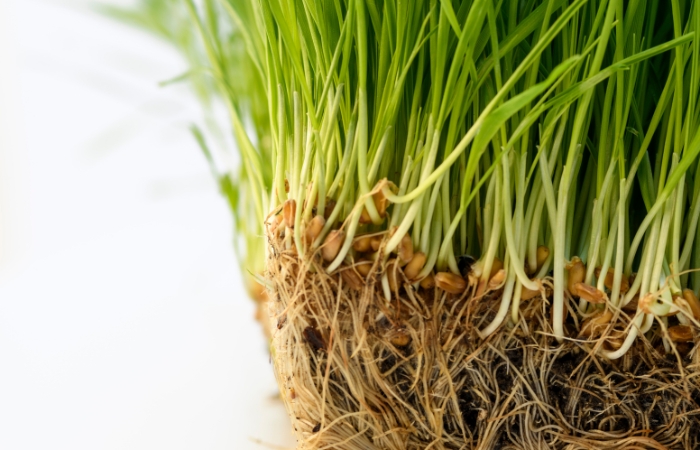
Decreasing Chemical Dependency: Pesticides and Fertilizers
Conventional lawns often require regular applications of chemical fertilizers and pesticides to maintain their lush appearance and combat weeds and pests. These chemical inputs can have negative environmental implications, including leaching into water sources and harming beneficial organisms.
In contrast, wheatgrass’s robust growth and deep root system help it naturally outcompete weeds, reducing the need for chemical herbicides. Additionally, its ability to draw nutrients efficiently from the soil lessens the dependency on synthetic fertilizers.
By embracing wheatgrass, homeowners can significantly decrease their reliance on chemical inputs, promoting a healthier ecosystem in their lawns and contributing to a safer and more sustainable environment.
Enhanced Soil Health and Erosion Control
The deep root system of wheatgrass plays a vital role in promoting soil health and erosion control. As the roots penetrate deep into the soil, they create channels that improve water infiltration and retention, reducing the risk of soil erosion during heavy rainfall or watering.
Moreover, as wheatgrass adds organic matter to the soil through its root system and clippings, it enhances soil fertility and structure. The increased organic matter content encourages the activity of beneficial microorganisms, improving nutrient cycling and overall soil health.
Conclusion
Wheatgrass’s ability to retain water efficiently, coupled with its resilience in the face of drought and heat, presents an attractive proposition for homeowners, businesses, and communities seeking to reduce their water footprint. By transitioning from water-thirsty conventional lawns to the eco-friendly embrace of wheatgrass, we have the power to make a positive impact on our water resources, lower water bills, and promote sustainable landscaping practices.



